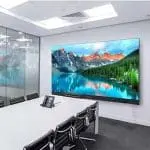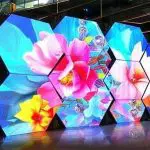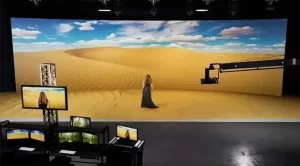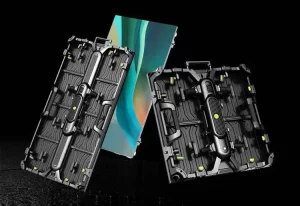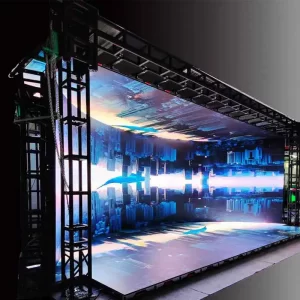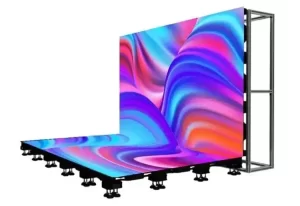
Introduction
The entertainment and technology industries are undergoing a seismic shift, driven by the convergence of extended reality (XR) and advanced display systems. At the heart of this transformation lies XR LED Display technology—a groundbreaking fusion of real-time rendering, high-resolution LED walls, and immersive interactivity. From Hollywood blockbusters like The Mandalorian to futuristic metaverse applications, XR LED Displays are redefining how we create content and experience digital worlds. This article explores how this technology is revolutionizing virtual production and unlocking new possibilities for immersive spaces.
What is XR LED Display? Bridging the Physical and Digital Worlds
XR LED Display refers to the integration of extended reality (encompassing AR, VR, and MR) with ultra-high-definition LED screens. Unlike traditional green screens, these systems combine three core components:
- LED Volume Walls: Curved or modular LED panels that display dynamic, photorealistic 3D environments.
- Real-Time Rendering Engines: Software like Unreal Engine or Unity generates environments instantaneously, syncing with camera movements.
- XR Tracking Systems: Cameras, sensors, and motion-capture tools align virtual and physical elements in real time.
This synergy allows creators to visualize complex scenes on-set, eliminating post-production guesswork while offering unparalleled immersion.
Virtual Production 2.0: How XR LED Displays Are Reshaping Filmmaking
The success of Disney’s The Mandalorian marked a turning point for XR LED Display adoption in filmmaking. By replacing green screens with LED walls, the production achieved:
- Realistic Environmental Lighting: Actors and props interact with virtual backgrounds naturally, with accurate reflections and shadows.
- Faster Workflows: Directors can adjust scenes in real time, reducing months of post-production.
- Enhanced Actor Performance: Immersive environments boost authenticity, as seen in The Batman and Thor: Love and Thunder.
Traditional green screens, while cost-effective, struggle with limitations like inconsistent lighting and heavy reliance on VFX. In contrast, LED volumes enable “in-camera” effects, slashing costs and accelerating timelines.
Beyond Hollywood: XR LED Displays as the Gateway to the Metaverse
The metaverse—a collective virtual space—demands seamless immersion. Here, XR LED Displays are emerging as a critical infrastructure:
1. Virtual Collaboration Spaces
Imagine stepping into a metaverse boardroom where holographic avatars interact atop LED walls displaying lifelike data visualizations. Companies like NVIDIA Omniverse and Meta Horizon Workrooms are leveraging XR LED systems to create hybrid workspaces that blend physical and digital elements, reducing travel costs while enhancing engagement.
2. Live Events and Holographic Stages
Concerts and conferences are transcending physical limits. South Korea’s K-pop giants use XR LED stages to project 360° virtual landscapes, while holographic performers like ABBA’s Voyage showcase how audiences can interact with digital avatars in real time.
3. Education and Training
Medical students can practice surgeries in hyper-realistic VR environments projected via LED walls, while engineers simulate machinery repairs within immersive XR sandboxes.
Technical Challenges and Future Innovations
Despite its potential, XR LED Display adoption faces hurdles:
- Cost: High-end LED volumes require significant upfront investment.
- Latency: Sub-millisecond synchronization between cameras and screens is critical.
- Resolution: Demands for 8K+ displays grow as viewers seek pixel-perfect clarity.
Future advancements aim to address these barriers:
- MicroLED Panels: Thinner, brighter, and more energy-efficient displays.
- AI-Powered Rendering: Machine learning accelerates scene generation and optimization.
- 5G Integration: Ultra-low latency streaming for remote collaboration.
Conclusion: XR LED Display—A New Era of Creative Freedom
From virtual film sets to metaverse innovation, XR LED Display technology is dismantling barriers between imagination and reality. As costs decline and accessibility grows, industries beyond entertainment—gaming, education, healthcare—will harness its power to build immersive, interactive worlds.
The future of storytelling and digital interaction isn’t just on the horizon—it’s being projected, pixel by pixel, onto XR LED walls today.










